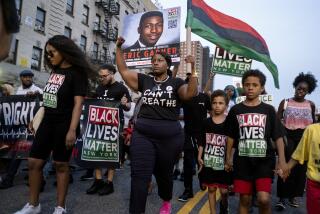Delinquent youth more likely to die violently as adults, study says

- Share via
Delinquent youth are at risk of early violent death in adulthood, regardless of race, and females are especially vulnerable, a study released Monday suggested.
Girls detained by authorities had nearly five times the rate of violent death as females in the general population – in part because of low rates of violent death for females in general, the researchers said.
“Our findings are shocking,” said Linda Teplin, lead author of the study, published in the journal Pediatrics, and a professor of psychiatry and behavior sciences at Northwestern University’s medical school.
The researchers interviewed 1,829 people ages 10 to 18 who were detained at the Cook County Juvenile Temporary Detention Center in Chicago from 1995 to 1998. The participants were followed for up to 16 years later, using death records. The comparison group is the overall population of Chicago’s Cook County.
The juveniles who took part had not yet had their cases adjudicated – and so were not convicted at that point.
Of the participants, 111 died, 75 of those as victims of homicide. Of the 75, 68 were killed with firearms. Death rates of Latino males were nearly five times the general population, and Latino females died at more than nine times the rate of the general population. The rate for African Americans was 4.5 times that of whites. At 25 to 29 years of age, the male death rate was still more than twice that of the general population.
“What’s shocking is that there are enough deaths to study,” Teplin said.
Three risk factors during adolescence predicted violent death up to age 34: alcohol use disorder, selling drugs and gang involvement, the study found. These factors are modifiable and “early prevention is key,” the researchers wrote.
The issues the study illuminates have to do with the communities the young people come from, Teplin said.
“It’s not just when they leave [detention], but why they get in,” she said. They live in poor neighborhoods, go to “really terrible schools, and they are not equipped to get a good job, and they end up falling into delinquent acts.”
The researchers never saw a juvenile from the wealthy North Shore area at the detention center, she said. It’s not that they don’t sell drugs or get involved in other illegal behaviors; the difference is that they get treatment rather than sentences, have families who can support them and other advantages, Teplin said.
Poor and minority children, Teplin said, don’t get services in their communities, get detained, and when released find themselves in the same situation, “and they end up in a revolving door.”
The Affordable Care Act could help make some services – treatment for psychiatric disorders that can lead to drug abuse as a way of self-medicating, for example – more available, Teplin said. Such programs do work, she said, citing interventions to reduce aggressive behaviors that start when children are very young.
The study does not reflect problems with the detention system but in the communities from which the young people emerge.
For health and fitness news, follow me on Twitter: @mmacvean







